A Desert Hiker’s Guide to Cryptobiotic Soil: Don’t Bust the Crust!
What is cryptobiotic soil and why is it so important? Learn everything you need to know to protect this biological living soil crust in the desert.
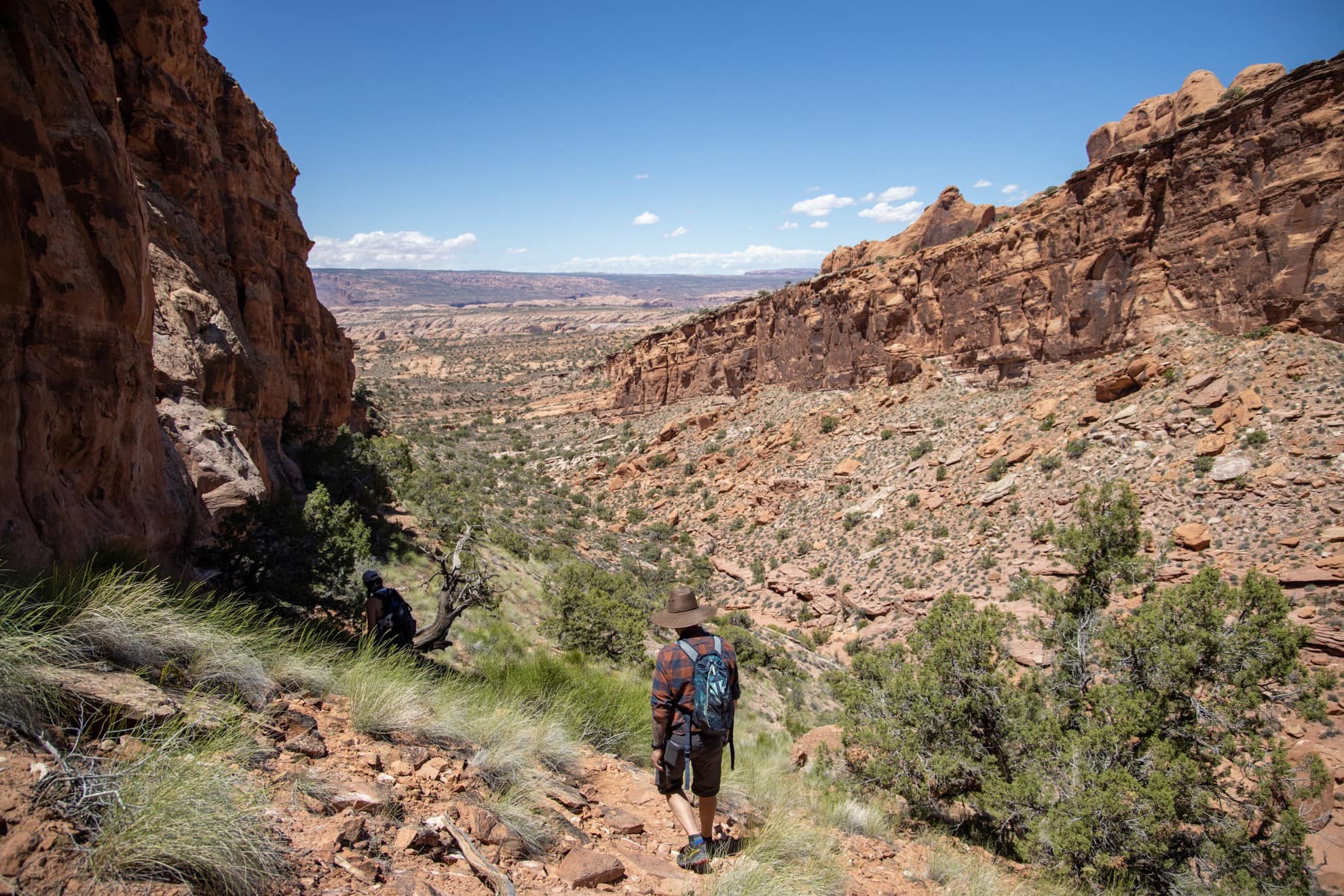
Have you ever wandered through the desert and wondered what the strange-looking bumpy layer of dark crust was on top of the dirt? It’s a common question, and an important one to ask for any outdoor enthusiast.
What you’re looking at is not only unique but also extremely vital to the desert’s ecosystem. It goes by the name of cryptobiotic soil crust, also known as biological soil, cryptogamic, or microbiotic soil crust.
If you’re a desert hiker, backpacker, climber, or photographer you’ll want to read this through to the end. Understanding this vital biological soil crust is essential for any outdoor enthusiast because it’s found all over the world in arid and semi-arid environments and it’s extremely important for these ecosystems.
As adventurers in the outdoors, it’s our responsibility to be aware of the environment we’re exploring and do our part in preserving the land beyond our visit. In this post, I’ll explain what cryptobiotic soil is, why it’s so important, how to identify it, and how to reduce your impact while still having fun outdoors.
This post may contain affiliate links.
What is Cryptobiotic Soil Crust?
First, let’s break down the name. Crypto means ‘hidden’ and biota means ‘life’, so cryptobiotic literally translates to ‘hidden life’.
From the naked eye, it looks just like crusty black dirt but there’s so much more to it. The biological soil crust is a living soil that’s comprised mostly of cyanobacteria, as well as cyanolichens, moss, fungi, and other bacteria.
Cyanobacteria, aka blue-green algae, are one of the oldest life forms known to man. It’s said that this is one of the first organisms to colonize Earth and it’s one of the major contributors to cultivating fertile soil across the globe.
This cyanobacteria originally turned earth’s early carbon dioxide-rich environment into healthy oxygen, which allowed other lifeforms to survive.

Save this post!
Enter your email & I'll send this post to your inbox! You'll also receive my weekly newsletter full of helpful advice for planning your adventures.
Where is Cryptobiotic Soil Found?
Cryptobiotic soil and crust can be found in arid and semi-arid throughout the world. In the United States, it’s primarily found in the southwest regions of southern Utah like Moab, Arizona, and the Sonoran Desert as well as farther north on the Colorado Plateau. Here’s a few of our favorite destinations where cryptobiotic soil is found:
Why is Biological Soil Crust So Important?
Cryptobiotic soil has been dubbed the ‘protector of the desert’. The slow-growing cyanobacterial filaments move through wet soil to form a complex web of sticky fibers. This web is what fuses soil particles together, creating a thick, hard layer for new growth, which also helps to prevent soil erosion and paves the way for new growth.
Here are a few ways in which cryptobiotic soil is so important for ecosystems:
Water absorption
Cryptobiotic soil has the potential for significant water absorption thanks to its sponge-like constitution. The porous structures also help to regulate water runoff and reduce evaporation, which is extremely important since the desert sees little rain.
Erosion prevention
The cryptobiotic crust is also a defender against erosion. Because the sticky webs of soil retain water, plant life is able to root into the spongy crust which enables them to survive hot, dry conditions.
It then converts nitrogen from the air into usable nitrogen to help plants grow. As time goes on, other organisms begin to grow in the soil, including lichen, moss, fungi, and other bacteria.
Research shows that large sections of the western United States have damaged crustal layers due to the increasing recreational and commercial uses of these areas.
As a result, this increase in human activity and disturbance to the crust could lead to significant damage due to wind and water erosion, as well as the loss of essential nutrients.
New growth
Cryptobiotic soil is the building block for new growth in the desert. Without it, wind erosion and rain would cause a constant shift in the sand, preventing any chance for new seedlings to establish roots.
But the filamentous cyanobacteria present in the soil create a structural network for organic matter to grow like junipers, vascular plants, cacti, and other vegetation that visitors can see in desert landscapes.
Without this thin layer of crust, many of these areas would succumb to desertification.
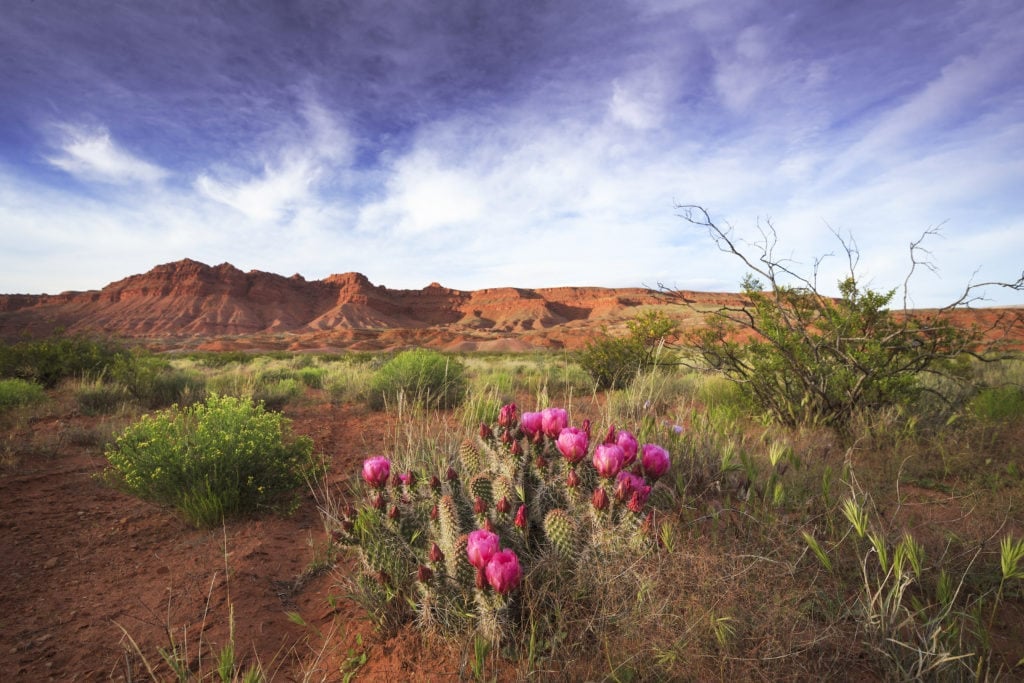
How to Identify Microbiotic Soil Crust
It’s important to know how to identify this soil because it’s very susceptible to damage by unaware hikers, off-road vehicles, and animal tracks. The first step in damage prevention is awareness.
Young biological soil crust is a little harder to identify than a mature crust. It’s flat and brown, much like regular dirt. But mature crust is thick, bumpy, and dark brown or black.
It’s often coated with lichen or moss, which is a sign of maturity. These mature crusts could be thousands of years old (and you definitely don’t want to be the one that damages something that old, do you?)
The older, mature crust is known to play a large role in the cryptogamic plant diversity of these regions.
Here is a photo use as a reference, so you know what to look for on your next desert adventure:
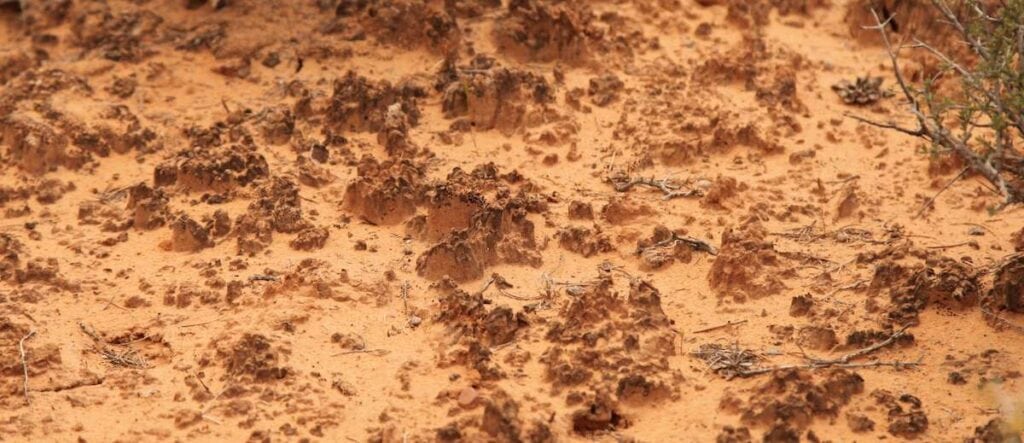
How to Protect Microbiotic Soil Crust
This is the most important piece of information in this post. Loss of the soil means loss of fertility in the entire area around it, which could have devastating effects on the region.
When damaged, the colony of organisms could take several hundred to 5,000+ years to recolonize and reform in arid regions (you read that right.) Basically, it can be irreparably damaged just by the stomp of the foot.
The biological microphytic crust is the lifeline of the desert because it plays a vital role in soil stability, moisture, and nutrient cycles. Without it, nothing can grow and the plant and animal life that rely on it, would not survive.
These soil crusts are very, very fragile, even more so during dry seasons. Even the smallest amounts of pressure (by foot, tire, paw, or hoof) can expose the sublayers beneath the surface, leaving the crust susceptible to erosion and threatening the living organisms.
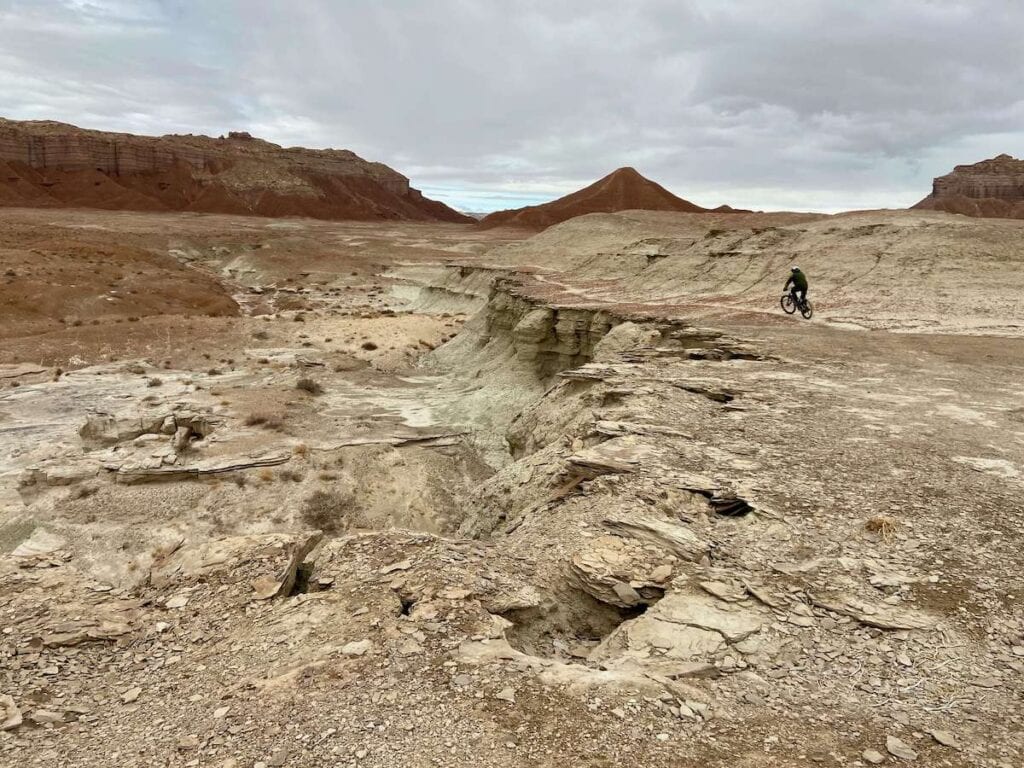
So, you can imagine how much of an adverse impact our actions can have on the region that depends on this crust.
Human footprints and animal hooves can crush the biological soil underneath, and driving or parking a vehicle atop it leaves an even greater impact. While we don’t have control over which way wild animals go, we do have the power to choose which way we go and where our pets wander.
Heading to the desert?
Desert Hiking Blog Posts
So, the best way to preserve microbiotic crust is pretty simple: don’t go near it! If there are signs posted in the area notifying you of its presence, keep an eye out on the trail and on the road.
And, most importantly, stay on the designated trail and road. Going off-trail or off-road with your vehicle increases your chance of accidentally tramping on the soil crust.
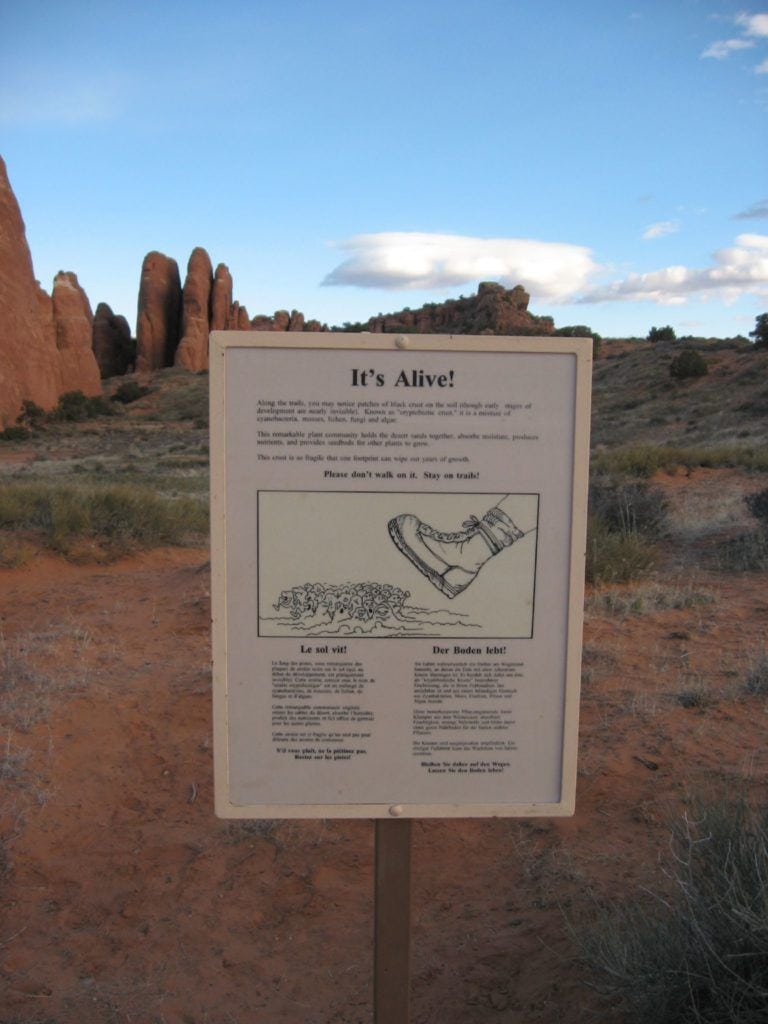
In the event that you do encounter it along the way and you’re unable to turn around or avoid it, the best practice is to walk in a single-file line with your group and pets to minimize the chance of widespread damage from your group’s impact. Then, kindly spread the word to any other people you meet along the way that might not have this information.
With the right information and education, we’re able to make better choices as responsible outdoor adventurers. This way, we can do the best we can with the information we have to protect and preserve the places we get to visit.
READ NEXT
Learn more about responsible recreation in the outdoors with these related blog posts:
I hope that with this information you feel comfortable identifying cryptobiotic soil and understand why it’s so important to give it space and don’t crush the crust! Have you encountered this soil crust before? If so, where? Let us know in the comments below.

